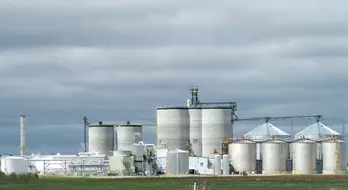The Future of US Ethanol Hinges on Policy Changes for Higher Blends
.webp)
- The US ethanol industry has been constrained by a "10% blend wall," with corn consumption for fuel remaining largely unchanged since 2010.
- The most immediate path to growth is through policy that allows for higher ethanol blends, such as year-round E15.
- Increasing the blend rate by just 1% could generate nearly 500 million additional bushels of corn demand.
- A bipartisan bill exists to enable this, but it requires a legislative vehicle to pass into law
The chief economist for the National Corn Growers Association has emphasized that policy changes are required to increase the ceiling for ethanol production and generate additional demand for farmers. Economist Krista Swanson explained that the volume of corn used for ethanol has remained largely stagnant since 2010.
She described the industry as being constrained by the "10 percent blend wall," and without regulatory adjustments to permit higher ethanol blends, growth is limited. This assessment aligns with USDA forecasts, which project that corn used for ethanol will remain near its current level of 5.6 billion bushels for the next decade.
Read More About Ethanol Production Cost Reports - Request Free Sample Copy in PDF
The "10 percent blend wall" is a critical barrier limiting the growth of the US ethanol industry. It describes the point where nearly all gasoline sold nationwide contains the maximum 10% ethanol blend (E10), leaving no room for further demand expansion. This saturation occurs because most vehicles and fuel infrastructure were historically approved only for E10, while total gasoline consumption has remained stagnant. Consequently, ethanol production cannot increase unless higher blends like E15 become widely available and approved for year-round use. Breaking through this blend wall is essential for creating new demand for both ethanol and the corn used to produce it.
Swanson identified allowing year-round sales of E15 gasoline or approving even higher ethanol blends as one of the most immediate strategies to boost corn demand. She projected that even a one percent increase in the blend rate could lead to an additional 486 million bushels of corn demand, with the potential for 2.4 billion bushels at full implementation based on current gasoline usage.
She cited the bipartisan Nationwide Consumer and Fuel Retailer Choice Act as a potential vehicle to quickly create more market-driven demand, though she noted that challenges remain in finding a suitable legislative path for its passage.



